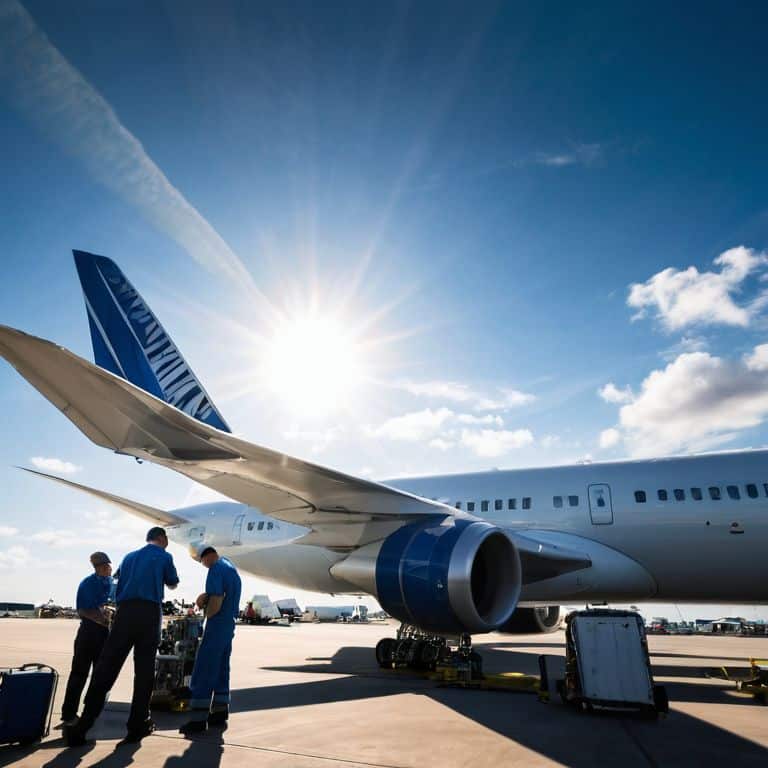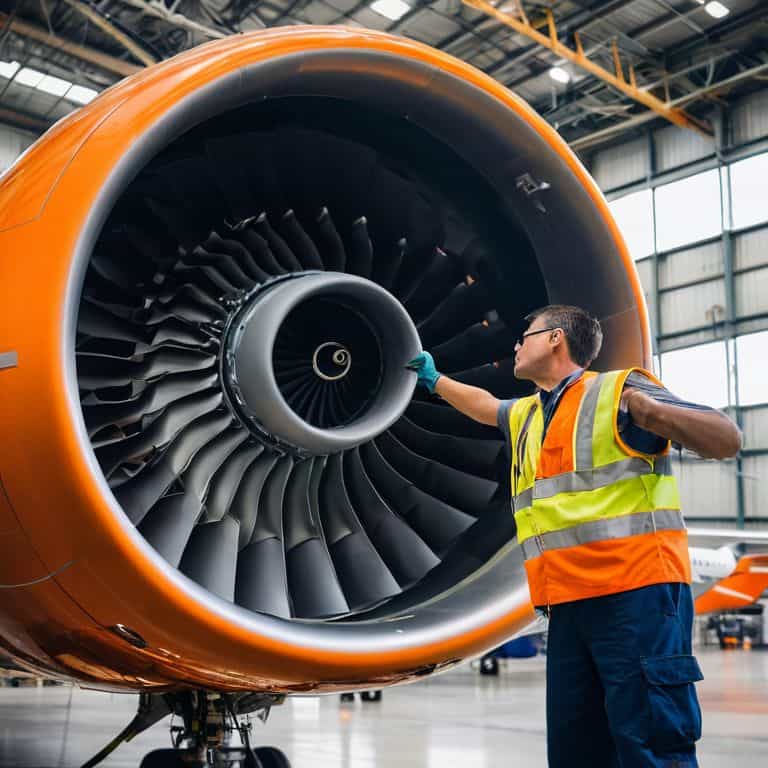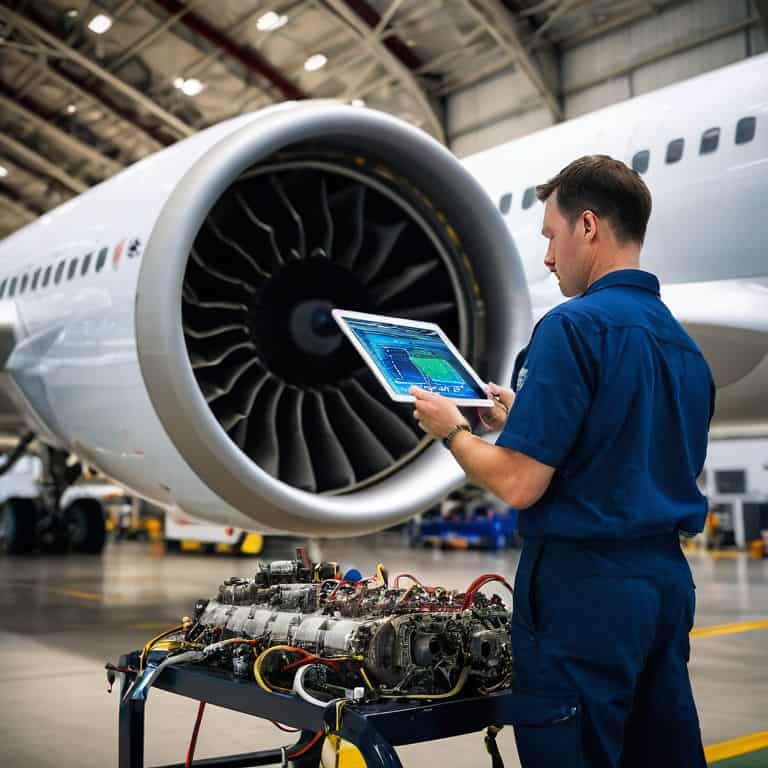I still remember the frustration of being stuck on a delayed flight, only to find out that a mechanical issue was the culprit. It got me thinking – what if there was a way to predict and prevent these issues before they even happen? That’s essentially what is predictive maintenance in aviation: a way to use data and analytics to forecast potential problems, reducing downtime and making air travel more efficient. But, in my experience, the concept of predictive maintenance is often shrouded in jargon and technical complexity, making it hard for people to understand its true potential.
As someone who’s spent years working in the aviation industry, I want to cut through the hype and give you a clear, no-nonsense understanding of predictive maintenance. In this article, I’ll share my personal insights and experiences, highlighting the real-world benefits of this technology. I’ll explain how predictive maintenance is being used to improve flight safety, reduce delays, and make air travel more convenient. My goal is to provide you with a comprehensive understanding of what is predictive maintenance in aviation, and how it’s revolutionizing the industry from the inside out.
Table of Contents
Unlocking Aviation Secrets

As I delve into the world of aviation, I’m constantly fascinated by the predictive analytics in aircraft maintenance that are revolutionizing the way we approach flight safety. By leveraging advanced algorithms and machine learning, airlines can now identify potential issues before they become major problems, reducing downtime and increasing efficiency. This is a game-changer for the industry, and I’m excited to explore the possibilities.
One of the key benefits of condition based maintenance for airlines is the ability to reduce costs associated with unnecessary repairs and replacements. By using sensor technology to monitor aircraft performance in real-time, maintenance teams can pinpoint exactly when and where repairs are needed, minimizing waste and maximizing resources. This approach also enables airlines to optimize their maintenance schedules, ensuring that planes are in the air when they’re needed most.
The integration of artificial intelligence in flight safety is another area where predictive maintenance is making a significant impact. By analyzing vast amounts of data from various sources, AI-powered systems can identify patterns and anomalies that might indicate a potential safety risk. This allows airlines to take proactive measures to prevent accidents and ensure the safest possible flight experience for passengers. As someone who’s passionate about machine learning for predictive maintenance, I’m thrilled to see the aviation industry embracing these innovative technologies.
Condition Based Maintenance Revolutions
As I delve into the world of predictive maintenance, I’m excited to explore the concept of condition-based maintenance, which is fundamentally changing the way airlines approach equipment upkeep. By continuously monitoring the condition of aircraft parts and systems, maintenance teams can pinpoint potential issues before they become major problems.
This approach enables a more proactive maintenance strategy, allowing airlines to reduce downtime and increase overall efficiency. I’ve seen it in action, and it’s remarkable how this shift in mindset can lead to significant cost savings and improved safety records.
Predictive Analytics in Action
As I delve into the world of predictive maintenance, I’m fascinated by real-time data analysis and its potential to revolutionize flight operations. By leveraging advanced algorithms and machine learning, airlines can now pinpoint potential issues before they become major problems.
This proactive approach enables airlines to schedule maintenance during downtime, reducing delays and increasing overall efficiency. The use of predictive modeling allows for a more accurate forecast of equipment failures, ensuring that planes are airworthy and ready for departure.
What Is Predictive Maintenance

As I delve into the world of aviation maintenance, I’m excited to share with you the predictive analytics in aircraft maintenance that are revolutionizing the industry. Predictive maintenance is all about anticipating and preventing issues before they arise, rather than reacting to them after the fact. By leveraging condition based maintenance for airlines, maintenance teams can reduce downtime and increase overall efficiency.
At its core, predictive maintenance involves using sensor technology for aircraft monitoring to track the health and performance of aircraft systems in real-time. This data is then analyzed using machine learning for predictive maintenance to identify potential issues before they become major problems. By catching these issues early, airlines can avoid costly repairs and minimize the impact on their operations.
The benefits of predictive maintenance are clear: aviation maintenance cost reduction strategies that actually work, improved safety, and increased passenger satisfaction. As someone who’s passionate about the future of aviation, I’m thrilled to see artificial intelligence in flight safety playing a major role in shaping the industry’s maintenance practices. By embracing these innovative technologies, airlines can stay ahead of the curve and provide a better experience for their customers.
Artificial Intelligence for Flight Safety
As I delve into the world of predictive maintenance, I’m excited to explore how artificial intelligence is transforming flight safety. By analyzing vast amounts of data, AI systems can identify potential issues before they become major problems, ensuring that planes are airworthy and reducing the risk of accidents.
The use of machine learning algorithms is particularly noteworthy, as they enable airlines to detect patterns and anomalies in aircraft performance, allowing for proactive maintenance and minimizing downtime. This not only improves safety but also increases efficiency, making the entire aviation system more reliable and effective.
Sensor Technology for Smarter Aircraft
As I delve into the world of predictive maintenance, I’m excited to explore how sensor technology is transforming the way we monitor aircraft health. By installing advanced sensors throughout the plane, airlines can gather real-time data on everything from temperature and pressure to vibration and noise levels. This allows for proactive maintenance, enabling crews to identify and fix potential issues before they become major problems.
The use of sensor technology is also enabling more efficient condition-based maintenance, where repairs are only made when actually needed. By leveraging machine learning algorithms, airlines can analyze sensor data to predict when maintenance is required, reducing downtime and increasing overall efficiency. This approach is a game-changer for the industry, and I’m eager to see how it continues to evolve and improve in the coming years.
5 Key Takeaways: Unlocking the Power of Predictive Maintenance in Aviation
- Implementing a predictive maintenance strategy can reduce aircraft downtime by up to 50%, resulting in significant cost savings and improved passenger satisfaction
- Condition-based maintenance, a core aspect of predictive maintenance, allows airlines to move away from traditional scheduled maintenance, reducing unnecessary repairs and increasing overall fleet efficiency
- Artificial intelligence and machine learning algorithms play a crucial role in predictive maintenance, enabling real-time analysis of sensor data and identifying potential issues before they become major problems
- Effective predictive maintenance requires a combination of advanced sensor technology, data analytics, and collaboration between airlines, manufacturers, and maintenance providers to ensure seamless information sharing and issue resolution
- By embracing predictive maintenance, the aviation industry can not only improve safety and efficiency but also pave the way for more sustainable and environmentally friendly operations, aligning with the growing demand for eco-conscious air travel
Key Takeaways for a Smarter Aviation Future
I’ve seen firsthand how predictive maintenance can reduce downtime by up to 30%, making flights safer and more reliable for everyone involved
By leveraging predictive analytics, condition-based maintenance, and AI-powered sensors, airlines can unlock significant cost savings and improve overall efficiency – it’s a game-changer for the industry
As someone who’s passionate about the future of flight, I’m excited to see how these innovations will continue to shape the aviation landscape, from more efficient air traffic control to sustainable fuels and beyond
Predictive Maintenance in a Nutshell
Predictive maintenance in aviation is like being the air traffic controller of an airplane’s health – it’s about anticipating and preventing issues before they take off, ensuring safer, more efficient flights, and happier passengers, all by harnessing the power of data and innovative technology.
Oliver Byrne
Revolutionizing Flight: The Predictive Maintenance Era

As we’ve explored the world of predictive maintenance in aviation, it’s clear that this isn’t just about reducing downtime or increasing efficiency – it’s about creating a safer, more reliable flight experience for everyone. From predictive analytics to condition-based maintenance and the integration of artificial intelligence and sensor technology, the pieces are coming together to form a robust system that supports the smooth operation of air travel. By embracing these innovations, the aviation industry is poised to make significant strides in the years to come.
So, the next time you board a flight, remember the unsung heroes of aviation – the systems, the software, and the people working tirelessly behind the scenes to ensure your journey is as seamless as possible. As we look to the future, it’s exciting to think about how predictive maintenance and other emerging technologies will continue to transform the skies, making air travel faster, greener, and more enjoyable for generations to come.
Frequently Asked Questions
How does predictive maintenance in aviation handle unexpected issues that can't be predicted?
While predictive maintenance is incredibly powerful, it’s not a crystal ball – unexpected issues can still arise. That’s where agile response planning and real-time monitoring come in, allowing teams to quickly adapt and address unforeseen problems, minimizing downtime and ensuring safety remains the top priority.
Can predictive maintenance be applied to all types of aircraft, or are there limitations?
While predictive maintenance can be applied to most aircraft, its effectiveness varies. Smaller planes and legacy models might have limited sensor capabilities, making it harder to implement. However, many modern aircraft, from commercial airliners to business jets, can greatly benefit from predictive maintenance, and the industry is working to make it more accessible to all types of planes.
What kind of data and sensors are used to predict maintenance needs in aviation, and how is that data analyzed?
To predict maintenance needs, aviation relies on a network of sensors and data sources, including flight data recorders, engine sensors, and IoT devices. This data is then analyzed using machine learning algorithms and predictive analytics tools to identify patterns and potential issues, allowing for proactive maintenance and reduced downtime.



